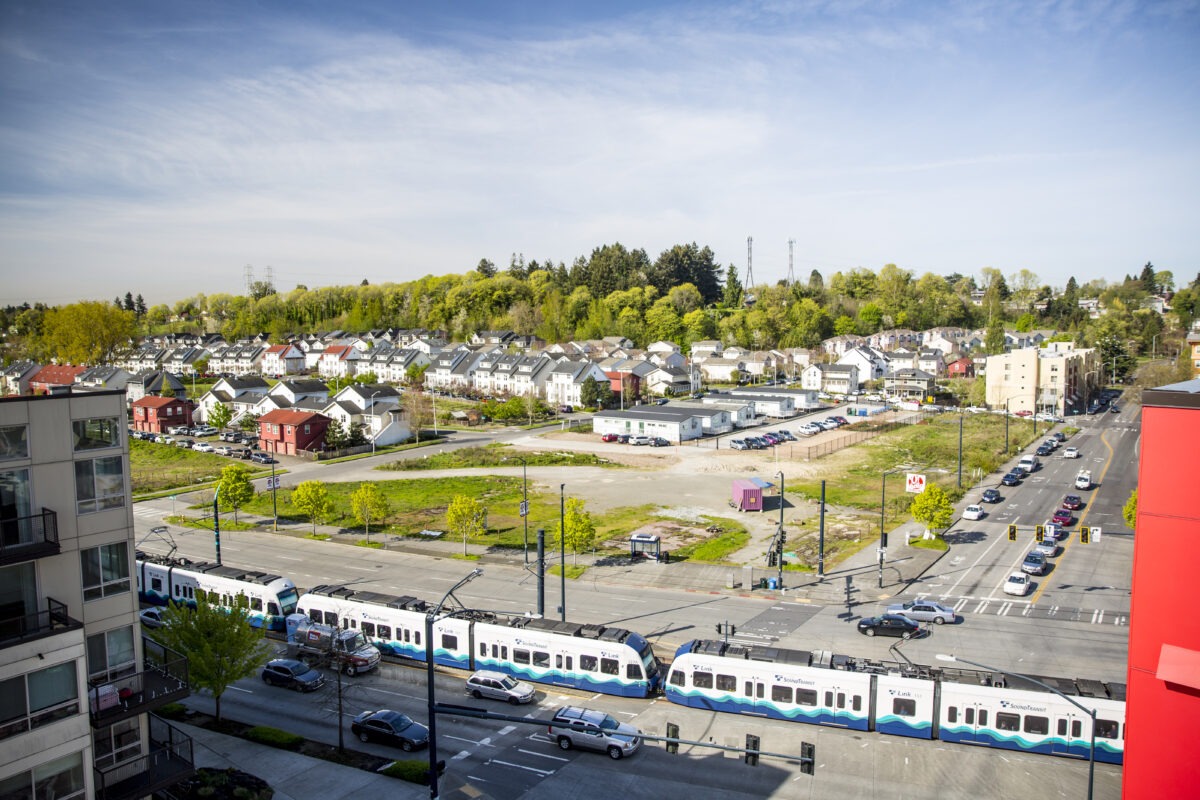Posted on October 3, 2025
Post categories: Landscape Architecture News Research Urban Design & Planning

Cities are heating up—and not equally. Urban heat is one of the most dangerous and fastest-growing effects of climate change. In Seattle, as in many U.S. cities, communities already facing environmental injustice often feel the worst impacts. These neighborhoods usually lack cooling resources like trees and shaded public space.
For Clelie Fielding, a recent graduate of UW’s dual master’s programs in Landscape Architecture and Urban Planning, this disparity presented both a challenge and an opportunity. Her thesis, “Temporary Tactics for Radical Shade,” proposes urgent, site-based actions to address heat inequity in Seattle. She outlines a three-phase framework of tactical, temporary, and transformative urbanism.
“Shade is a critical, life-saving resource,” Fielding writes. “But from an institutional planning perspective, it has become a monetized luxury—when it should be a fundamental civic resource for all.”
Using GIS data on temperature, impervious surfaces, racial equity, and tree canopy, Fielding built a citywide heat vulnerability map to find priority areas for shade. She then designed three scalable proposals within Seattle’s public right-of-way to deliver cooling where it’s needed most. Her framework offers practical, low-cost strategies that work fast while guiding longer-term planning and climate adaptation.
Fielding’s project shows that tactical urbanism alone can’t solve extreme heat. But it can act as a catalyst. Her designs aim to spark awareness, build community resilience, and turn public spaces into both a refuge from climate stress and a hub for civic connection.
In addition to her thesis work, Fielding co-authored “Climate Mitigation and Social Well-Being in Urban Design,” a guide created with support from the UW Green Futures Lab and the Scan Design Foundation.
“I think many people will benefit from learning more about Clelie’s work through this article, and it’s clear that there are transferable insights to what planners and designers can do right now,” says Dylan Stevenson, an assistant professor in the Department of Urban Design and Planning.